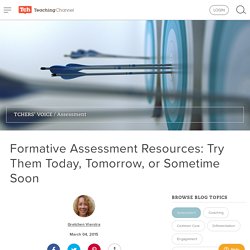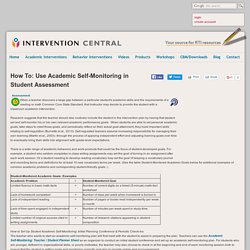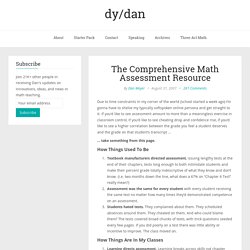

12 Alternatives To Letter Grades In Education. 12 Alternatives To Letter Grades In Education by Terry Heick Few artifacts of formal learning are as iconic as the letter grade.

What can I do to get an A? She’s a C student. He’s always gotten As and Bs in all of his classes. Then we turn the letters into numbers–letter grades become averages of letter grades, which, when calculated, determined whether or not a learner qualifies to play sports, get into college, or thinks of him or herself as “smart.” She has a 4.0 GPA. You’re not getting into Stanford with that GPA. It is an incredibly powerful symbol that isn’t going to be erased by long-winded rhetoric.
The issue is, in all honesty, they probably don’t. The Failure of the Letter Grade The letter grade fails because its job–to communicate learning results to learners and families—cannot possibly be performed a single symbol. But parents don’t want to hear about understanding because it’s grey area that doesn’t make sense. So that leaves education in a tight spot. 1. 2. 3. 4. 5. 6.
So What? 8 Strategies to Quickly Assess Prior Knowledge. By Barbara Blackburn Prior to teaching your lesson, it’s important to gauge where students are in their knowledge of the topic. We are going to look at eight simple strategies you can use to assess students before you design and carry out your lesson plan. Discover the Mistakes For the topic you will be teaching, create a webpage or blog entry that mimics an online encyclopedia entry.
Include at least four content errors. Anticipatory Guide It’s important to determine what a student actually understands about a concept prior to instruction. First, Pat gives students three minutes to answer a short true/false questionnaire. Tool 107: K-W-L Probably the most common method of identifying students’ prior knowledge that I see in classrooms today is a KWL chart. LINK Strategy Kendra Alston adapts the KWL strategy into a LINK for her students. After they complete the L column individually, her students turn to a partner and share their answers. As Kendra points out, if I’m a student, Word Sorts. Formative Assessment Tools & Resources. Recently, Teaching Channel brought you into classrooms where teachers and students are using formative assessment to adjust ongoing teaching and learning strategies to improve student learning: We partnered with Smarter Balanced Assessment Consortium to bring you videos of teachers using formative assessment as a deliberate four-step process.In Engaging Students with Productive Struggles, you'll see how math teachers are using lessons from Mathematics Assessment Project to encourage students to grapple with math concepts.In Letting Students Grapple, watch students engaging in formative assessment lessons that address misconceptions.

While these videos take a deep dive into formative assessment, we also want to provide you with some quick tips and resources. These are some of our favorites: Assessment Through the Student's Eyes - Educational Leadership. Interventioncentral. When a teacher discovers a large gap between a particular student's academic skills and the requirements of a reading or math Common Core State Standard, that instructor may decide to provide the student with a classroom academic intervention.

Research suggests that the teacher should also routinely include the student in the intervention plan by having that student set and self-monitor his or her own relevant academic performance goals. When students are able to set personal academic goals, take steps to meet those goals, and periodically reflect on their actual goal-attainment, they build important skills relating to self-regulation (Burnette et al., 2013). Self-regulated learners assume increasing responsibility for managing their own learning (Martin et al., 2003)--through the process of applying independent effort and adjusting learning goals over time to eventually bring their skills into alignment with grade-level expectations.
Self-monitoring plan: Initial Meeting. References. The Comprehensive Math Assessment Resource. Due to time constraints in my corner of the world (school started a week ago) I’m gonna have to shelve my typically softspoken online persona and get straight to it.

If you’d like to see assessment amount to more than a meaningless exercise in classroom control, if you’d like to see cheating drop and confidence rise, if you’d like to see a higher correlation between the grade you feel a student deserves and the grade on that student’s transcript … … take something from this page. How Things Used To Be Textbook manufacturers directed assessment, issuing lengthy tests at the end of their chapters, tests long enough to both intimidate students and make their percent grade totally indescriptive of what they know and don’t know. (i.e. two months down the line, what does a 67% on “Chapter 6 Test” really mean?)
How Things Are In My Classes.